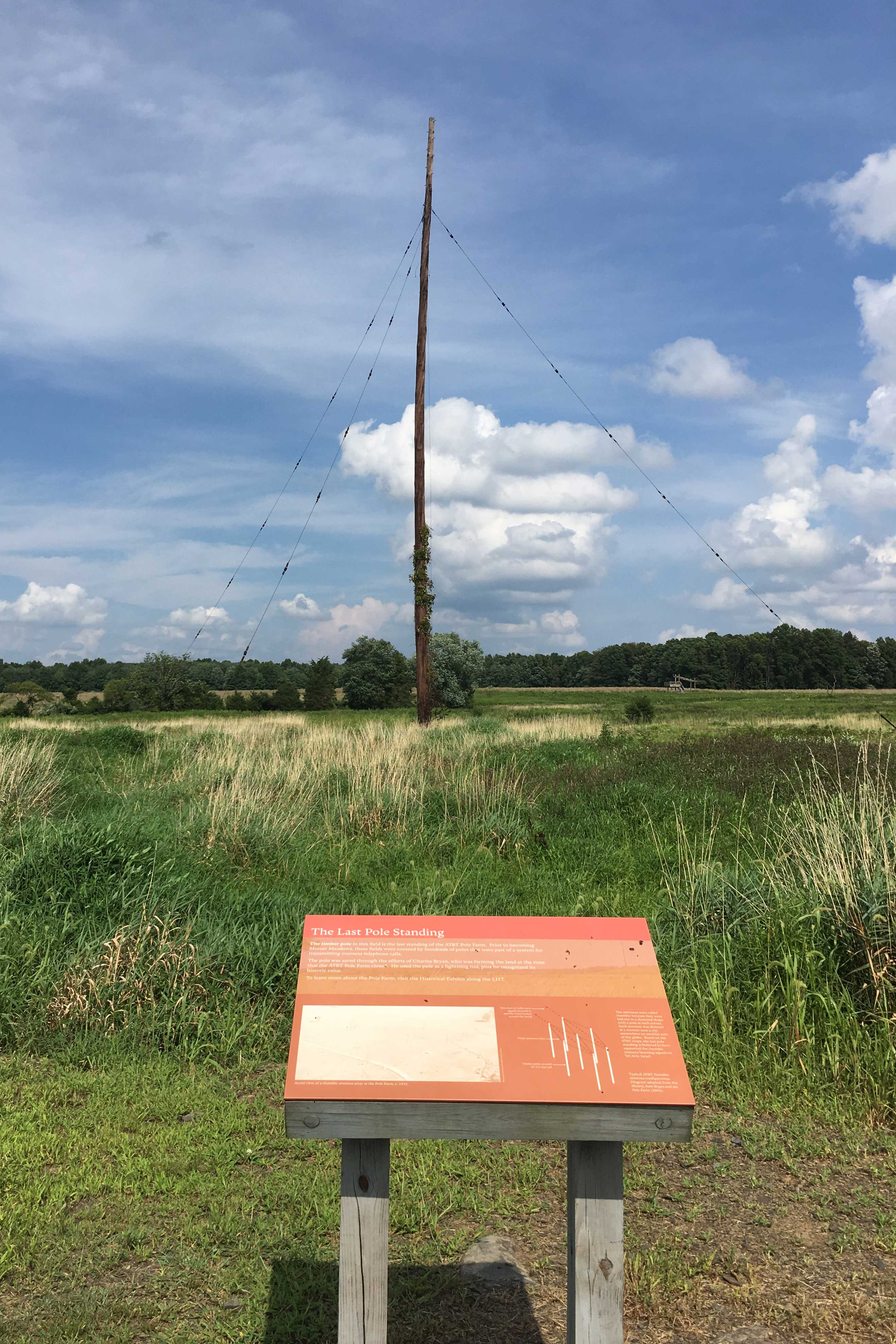Week 28: The Pole Farm
Tel Aviv, this is Telephone Pole calling. Telephone Pole calling, come in, Tel Aviv…hmm, they’re not answering…the line is dead.
But not so long ago this circuit was part of the most important communications center in the world. Back in 1927, Bell Telephone wanted to establish phone service between the U.S. and the rest of the world. Their scientists designed a short-wave radio transmitter that was made up of 19 steel towers, each 150 feet tall, and standing in a perfectly straight line almost a mile long. From these towers would hang a massive steel mesh curtain. If the curtain was aligned exactly perpendicular to a distant target, it could transmit a voice signal thousands of miles.
So where to put this thing? Well, it had to be located at least 45 miles away from a corresponding receiving tower in northern New Jersey, and it had to be close to Ma Bell’s trunk lines which ran down Route 1 through Princeton. After considering several locations, the company chose an 802-acre property in the farm country of Mercer County, New Jersey. Here, in 1929, the world’s first international telephone antenna was installed and pointed at London. For the next decade, every outbound call from the United States to Europe went through this single antenna. Calls were routed through a series of operators, took upwards of 30 minutes to set up and connect, and cost a whopping $45 for 3 minutes.
In the 1940’s, a much leaner antenna setup, known as the rhombic, started appearing on the property. The rhombic required just four wooden telephone poles, arrayed in a diamond pattern with the long axis pointed directly at the intended target. It was efficient and easy to set up, and soon the property was sprouting with rhombics pointed at cities around the world. The antennas to Tel Aviv and Honolulu popped up in 1940. Oslo, Stockholm, Berne, Brussels, Rio, San Juan and Caracas followed in 1946. Rome and Paris in 1947. Frankfurt, Lisbon, and Cape Town in 1948. There were so many poles on the property that the place became known as the “Pole Farm.” At its peak the Pole Farm had 46 rhombic antennas placing a million phone calls a year to 26 countries.
But technology and infrastructure kept changing. In the 1950’s, underwater cables were laid across the oceans. And in the 1960’s, satellites were launched. By 1965, these new systems had made the Pole Farm largely obsolete. In 1975, the poles themselves began to come down. Bell Telephone, now known as AT&T, started leasing the property back to farmers, and it soon reverted to fields and forest.
In 1995, the Pole Farm property was acquired for $8.6MM by Mercer County. It sat idle for years. But recently, it was reopened as a recreation and educational center known as the Mercer Meadows Pole Farm. Today you can walk and bike along miles of trails. See the concrete footprints of the original towers. Note some of the old cables lying in the woods. And, in the place where the operations buildings once stood, you can walk on a scale model of the Pole Farm, and marvel at the diamond-shaped markers pointing precisely at world capitals thousands of miles away.
And as for that connection to Tel Aviv? Well, that’s at the other end of the property. You can walk over there, or just drive a few miles by car. Pull up to the old Reed Farm. Walk past the corn cribs. Stroll around the back of the barn. And there, still standing tall and held up by guy-wires, is one lonely telephone pole. It’s the only pole left, the “last pole standing.”
It’s all that remains of the first global communications network on planet Earth.
